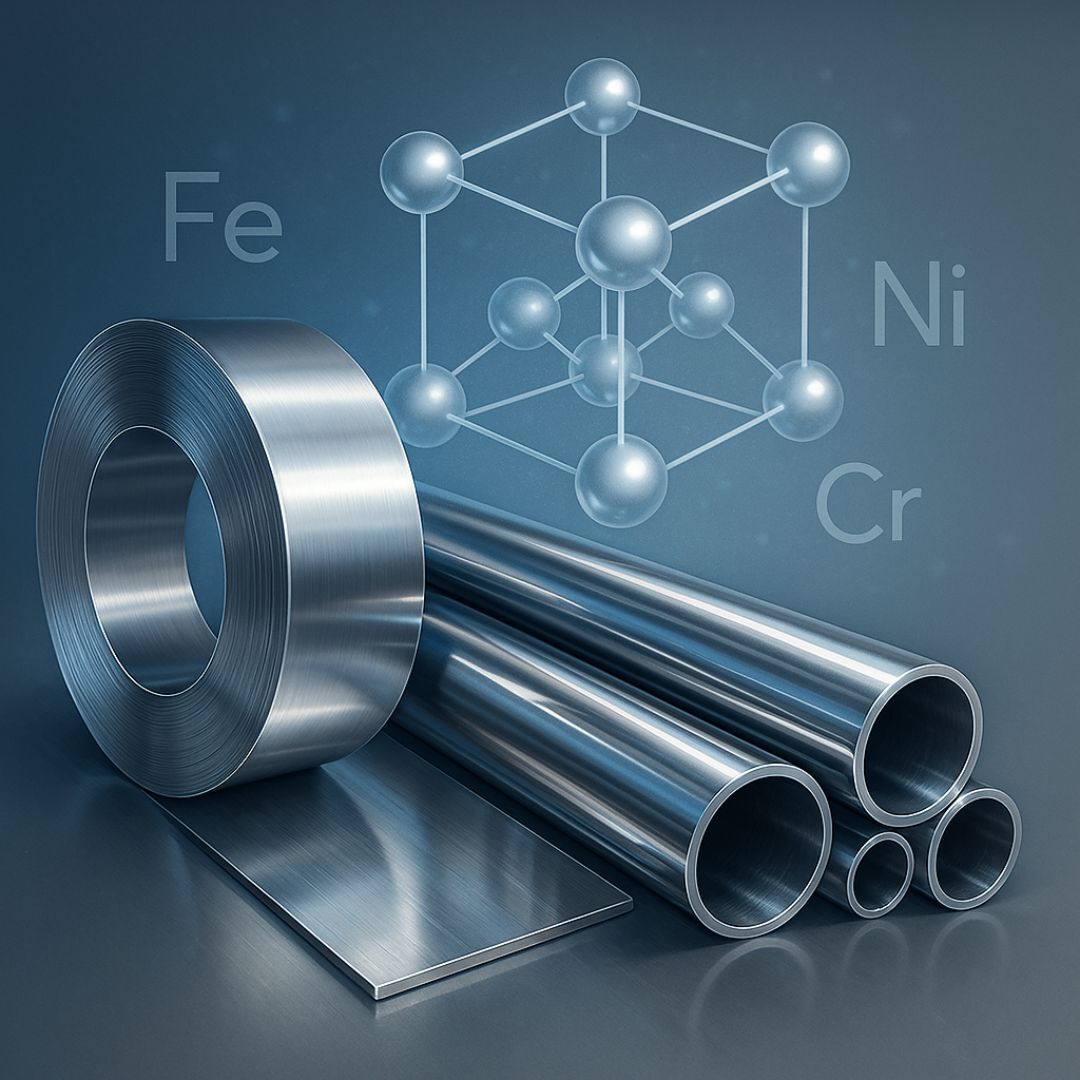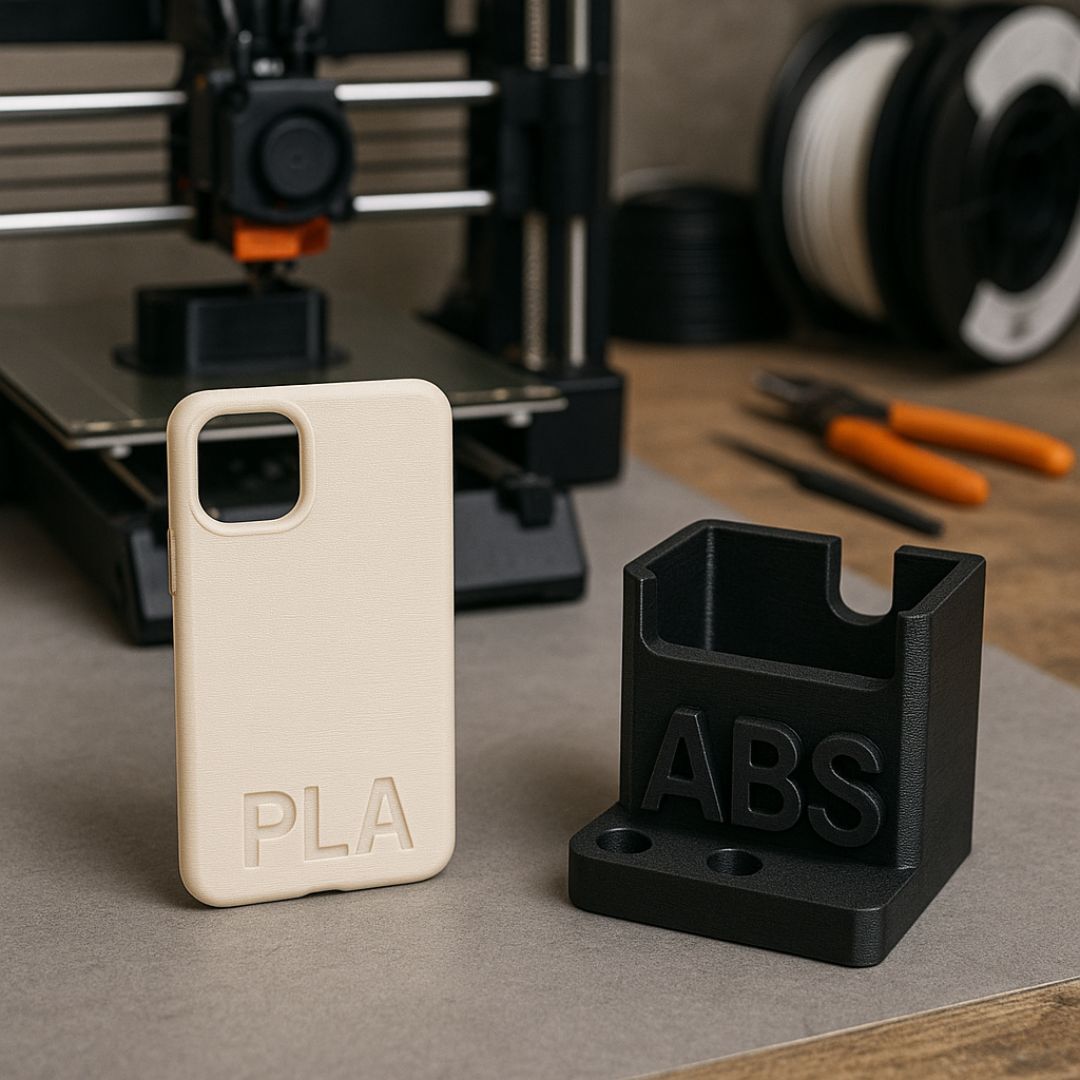2 min read
Stainless Steel 304 and 316: Comparison Between the Two Grades of Stainless Steel
Stainless steel is one of the most widely used materials in modern industry thanks to its corrosion resistance, durability, and versatility.Among the...

Austenitic steel is one of the most important and widespread categories of stainless steels. Renowned for its outstanding corrosion-resistance and favourable mechanical properties, austenitic steel is used in a vast range of industrial and domestic applications.
Austenitic steel is a type of stainless steel named after its austenitic crystal structure—an allotrope of iron with a face-centred cubic (FCC) lattice. This crystal structure is stabilised by alloying iron with elements such as nickel, manganese, chromium and nitrogen.
Chromium is essential for providing corrosion resistance, while nickel keeps the austenitic structure stable at room temperature, preventing its transformation into other crystal phases such as ferrite or martensite.
Steels are commonly divided into four principal groups according to their chemical composition and their mechanical and physical properties:
Austenitic Steels – Contain significant amounts of nickel and chromium, offer excellent corrosion resistance, good weldability and are non-magnetic. Common examples include AISI 304 (18% chromium, 8% nickel) and AISI 316 (with added molybdenum for enhanced corrosion resistance).
Ferritic Steels – Possess a body-centred cubic (BCC) lattice, contain mainly chromium with very little nickel, are magnetic and show good general corrosion resistance but limited ductility. A typical example is AISI 430, often used in household appliances and decorative cladding.
Martensitic Steels – Obtainable through specific heat treatments that give high hardness and strength, though lower corrosion resistance than austenitics. Typical grades are AISI 410 and AISI 420, used for cutting tools, cutlery and springs.
Duplex Steels – Combine ferritic and austenitic structures in roughly equal proportions, providing superior mechanical strength and high resistance to stress-corrosion cracking. SAF 2205 is one of the most widely used grades, particularly in the oil, gas and marine sectors.

The essential difference between ferritic and austenitic steels lies in their crystal structure:
Ferritic Steel – Has a BCC lattice. It contains mainly chromium (up to 30 %) and little or no nickel. It is magnetic, offers good corrosion resistance but lower ductility and toughness than austenitic steel.
Austenitic Steel – Has an FCC lattice that makes it non-magnetic under normal conditions. It provides high ductility, corrosion resistance and weldability, but is more expensive because of its substantial nickel content.
In short, ferritic steels are magnetic, cheaper and less ductile, whereas austenitic steels are non-magnetic, more expensive, but have better formability and corrosion resistance.
Martensitic steels are characterised by their ability to be hardened by specific heat treatments, thereby achieving very high mechanical properties such as hardness and strength.
Crystal Structure – Martensitic steel has a body-centred tetragonal (BCT) lattice obtained by rapid cooling from the austenitising temperature, whereas austenitic steel retains an FCC lattice.
Mechanical Properties – Martensitic steel is extremely hard and strong but also more brittle and less ductile than austenitic steel. Austenitic steel is softer, more ductile and easier to machine and weld.
Applications – Martensitic steels are mainly employed for tools, blades, surgical instruments and springs. Austenitic steels are preferred in corrosive environments, chemical, food and pharmaceutical applications, as well as for tanks and structural components.
Duplex steels are a balanced combination of ferritic and austenitic structures, achieved through a specific chemical composition and controlled heat treatment. This dual-phase structure gives duplex steels superior properties compared with purely austenitic grades—such as higher mechanical strength and better resistance to stress-corrosion cracking. Nonetheless, austenitic steels retain better ductility and ease of fabrication.

Thanks to their excellent properties, austenitic steels are used in numerous sectors:
Chemical and Pharmaceutical Industry – Equipment for handling aggressive substances, reactors and storage tanks.
Food Industry – Machinery for food processing, milk, wine and beer containers.
Medical Sector – Surgical instruments, medical devices and implants.
Automotive Industry – Exhaust systems and structural parts requiring corrosion resistance.
Construction and Architecture – External façades, balustrades, staircases and structures exposed to harsh environments.
AISI 304 – Used for kitchen equipment, sinks, piping, tanks and architectural components; valued for its balance of cost and performance.
AISI 316 – Employed in marine and aggressive chemical environments, storage tanks and medical/pharmaceutical components, thanks to molybdenum which boosts corrosion resistance.
AISI 321 and 347 – Used at high temperatures in chemical plant piping, heat exchangers and aerospace components, offering resistance to oxidation and intergranular corrosion.
Austenitic steels are notable for:
High Ductility – Ideal for cold-working processes such as bending, stamping and forming.
Corrosion Resistance – Capable of withstanding acids, alkalis and marine environments.
Excellent Weldability – Well-suited to structural and fabrication work.
High-Temperature Strength – Retain mechanical properties up to roughly 900 °C in certain grades.
Despite their many virtues, austenitic steels have some drawbacks:
High Cost – The presence of nickel and other expensive alloying elements makes them costlier than other steels.
Susceptibility to Stress-Corrosion Cracking – Under certain conditions, they can suffer from this type of corrosion.
Austenitic steel remains a cornerstone of the stainless-steel family owing to its exceptional corrosion resistance, ease of fabrication and versatility. A clear understanding of its characteristics—and how it differs from ferritic, martensitic and duplex steels—is essential for selecting the most suitable material for specific industrial applications and for ensuring optimal performance.

2 min read
Stainless steel is one of the most widely used materials in modern industry thanks to its corrosion resistance, durability, and versatility.Among the...

2 min read
In the world of FDM (Fused Deposition Modelling) 3D printing, material selection is a key factor in determining the quality, functionality, and...

1 min read
Weerg, a global reference in additive manufacturing and online CNC machining, collaborates with CT Pack, an Italian leader in the design and...